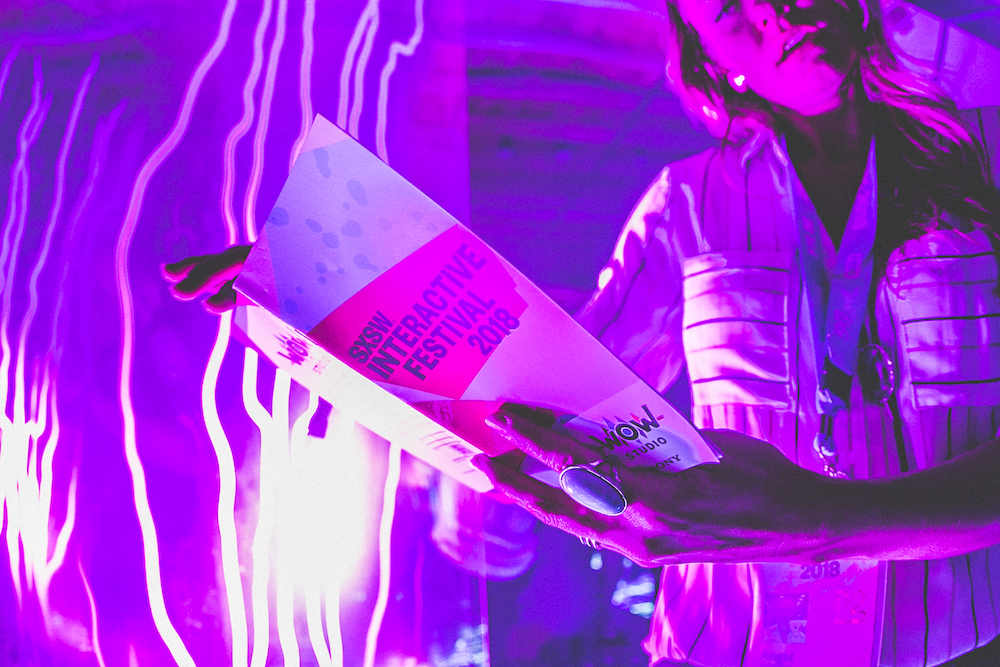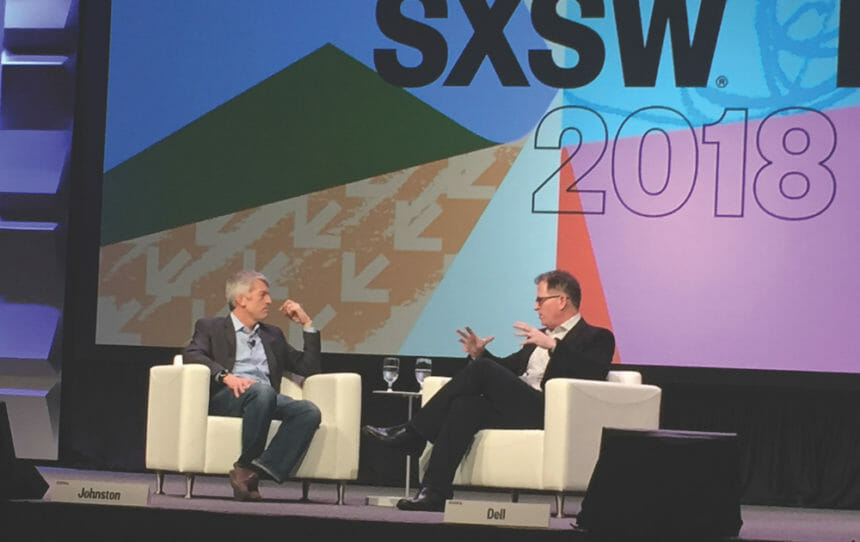The South by Southwest health track has come a long way in a short time. Half a decade ago, the Interactive Festival’s health sessions were relegated to a motley range of facilities blocks away from the action. As a result, if you weren’t attending SXSW specifically for the health content, you likely missed it.
Contrast this with plans for this year’s health track, scheduled for March 8 to 12. Attendees will see a wide range of health-related sessions — from Access to Care: All Health is Not Created Equally to Yoga for the Wounded Heart — packed into five full days and occupying a handful of A-list SXSW venues. Even the name has been supersized: Farewell old “health track,” hello sleek new “health and medtech track.”
“When we first started coming to SXSW, the health track content was halfway across town,” says AbelsonTaylor SVP, group creative director Noah Lowenthal. “From a content and speaker perspective, the conference has moved onto bigger and better things — bigger ideas from well-curated leaders.”
To Dana Abramovitz, the conference programming consultant who leads the health and medtech track, the progression has been a natural one. “I see SXSW as a reflection of what’s being discussed in the world,” she notes. “The fact we’re talking about health more often in our local communities contributes to the growth of the track.”
With the emphasis on health programming comes a concern for Abramovitz and her team: making sure the content appeals as much to medical pros and health-tech disciples as it does to creators and disruptors from other industries. Abramovitz, a biochemist, concedes it’s a tough line to toe.
“The people who come to SXSW are, in general, very interested in their health, and that has contributed to the growth we’ve seen,” she explains. “What I’ve heard from medical professionals is they appreciate the diversity and different perspectives. The people they find themselves sitting next to in our sessions aren’t the people they normally meet at conferences.”
W2O CMO Aaron Strout agrees, adding, “Straight-up health and health-tech is great, but mixing in leadership talks or other macro industry trends and themes is what feeds people’s souls.” With a full day of programming — including sessions on How Big Brands are Improving America’s Health and Marketing’s Role in the Rise of Health Activism — and its 10th annual Geekacue, W2O’s SXSW presence and investment trumps that of just about any other health-minded agency.

In 2019 and beyond, the big-picture aim of the health and medtech track will likely stay the same, Abramovitz says: to “get people who are attending SXSW to think about their health for just five minutes, regardless of their interests or where they’re coming from.” Which isn’t to say she doesn’t have specific ideas about the track’s continued evolution.
Abramovitz is striving to ensure the patient and consumer voice is represented in every health-related session. She hopes to spark conversations about the social determinants of health, particularly as they relate to access. And she wants to sustain the health and medtech track’s emphasis on data centricity.
“It’s hard for me and the people I work with to talk about the future because we try to stay in the present,” Abramovitz notes. “That seems a big part of it, how being more mindful and present can contribute to better health.”
This thinking informs Abramovitz’s picks for the 2019 track. She points to Generation Lonely: 10,000 Followers and No Friends, which will explore the difference between isolation and loneliness as well as note a possible link to inflammatory diseases and other medical ills, as a potential standout. She also touts the return of Claudia Williams, one of the leaders of President Barack Obama’s Precision Medicine Initiative, for the Silos in Healthcare are Preventing Better Outcomes discussion.
SXSW the right way
The expansion of the health and medtech track has left some would-be attendees borderline intimidated by the breadth of content offerings. To ease that distress, we checked in with a handful of past and future SXSW attendees for suggestions and hints about ways to get the most out of your stay.
Of the many broader-picture SXSW selling points — barbecue, non-wintery weather, microbreweries, and college town vibe — most are traceable to the host city of Austin, Texas, whose residents don’t seem overly annoyed by the conference-week invasion. However, beyond those components, SXSW devotees point to the city’s growing health-tech clout.
“Having the [Dell] Medical School [at the University of Texas at Austin] in our neighborhood helps because it put Austin on the map for the health and medtech spaces. But the city has grown in tech, innovation, and entrepreneurship, which is attractive to people who come [to SXSW],” Abramovitz says.
That convergence is a lure for many 2019 attendees and presenters. While he cautions SXSW “has to be careful not to isolate the health programming,” Austin-based Karis Group’s director of marketing Steven Cutbirth notes “the biggest value in SXSW is the convergence of interactive, music, and film. That ability to pull innovative and novel ideas from other industries into healthcare is why I attend. Last year I snuck away to hear This American Life’s Ira Glass’ keynote on how to tell a great story. I came away inspired to employ the tactics he shared in my everyday work.”
In terms of can’t-miss content, nearly every attendee points to Energizing Health, a programming mini-track around the topic of health equity that includes 15 or so sessions across four days. Participating organizations include the Aetna Foundation, the American Heart Association, the American Cancer Society, and the Robert Wood Johnson Foundation.
Other sessions likely to appear high on attendees’ lists include The Art of Patient-centricity, featuring Bristol-Myers Squibb’s Susan Sweeney and Parker Institute for Cancer Immunotherapy exec Jeroen Blokhuis, and Can Health Technology Increase Compassion? led by Dell Medical School’s Dr. David Ring.
At the same time, prospective attendees aren’t shy about sharing suggestions for future festivals. Cutbirth hopes for more content around patient advocacy. “The convergence of leaders across healthcare creates an opportunity for discussions that can lead to real change,” he explains. “I would love to see more conversation on how we can creatively advocate for patients.”
Lowenthal, for his part, believes health execs are underserved by the current slate of programming. “Lots of execs attend [SXSW], but the content is either hands-on for day-to-day folks or broadly inspirational,” he says. Like several other longtime attendees, he pines for more experiential health-tech content. “The music and movie tracks blow the tech track away,” he continues. “Why do our panels need to be dry and boring?”
From the March 01, 2019 Issue of MM+M - Medical Marketing and Media







